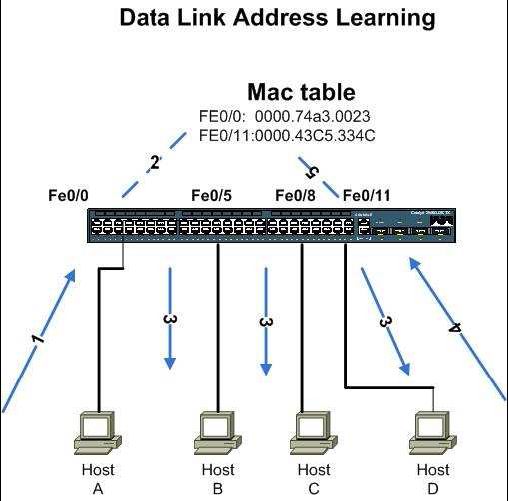IP address
destination MAC address
ARP table entry
FCS checksum
第1题:
A. IP address
B. destination MAC address
C. ARP table entry
D. FCS checksum
第2题:
A. source and destination MAC address
B. source MAC address and destination network address only
C. source and destination network address only
D. source network address and destination MAC address
E. source and destination MAC address and source and destination network address
第3题:
A Ezonexam Ethernet switch receives a unicast frame. with a destination MAC that is listed in the switch table. What will this switch do with the frame?
A. The switch will forward the frame. to a specific port
B. The switch will forward the frame. to all ports except the port on which it was received
C. The switch will return a copy of the frame. out the source port
D. The switch will not forward unicast frames
E. The switch will remove the destination MAC from the switch table
F. None of the above.

第4题:
A.R1 will forward the packet out all interfaces.
B.R1 will drop this packet because this it is not a valid IP address.
C.As R1 forwards the frame containing this packet, Sw-A will add 192.168.1.255 to its MAC table.
D.R1 will encapsulate the packet in a frame with a destination MAC address of FF-FF-FF-FF-FF-FF
E.As R1 forwards the frame containing this packet, Sw-A will forward it to the device assigned the IP address of 192.168.1.255.
第5题:
A. The frame is dropped.
B. The frame is addressed with a broadcast MAC address and sent out all ports.
C. The frame is sent out all ports except the receiving port.
D. An ARP request is sent out all ports except the receiving port.
E. A destination unreachable message is sent back to the source address.
F. None of the above.
第6题:
A. To ma a known IP address to a MAC address
B. To map a known DLCI to a MAC address
C. To ma a known MAC address to an IP address
D. To ma a known DLCI address to a IP address
E. To ma a known IP address to a SPID address
F. To ma a known SPID address to a MAC address
第7题:
A. source MAC address
B. source IP address
C. source switch port
D. destination IP address
E. destination port address
F. destination MAC address
第8题:
●When a bridge transmits an Ethernet frame, the Ethernet frame. has(75).
(75)
A. the broadcast address for the its source address
B. the bridge's LAN address for its destination address
C. the bridge's LAN address for its source address
D. none of the above
第9题:
A.source IP address
B.source MAC address
C.egress interface
D.ingress interface
E.destination IP address
F.IP next-hop
第10题:
A.The switch will not forward unicast frames.
B.The switch will forward the frame to a specific port.
C.The switch will return a copy of the frame out the source port.
D.The switch will remove the destination MAC from the switch table.
E.The switch will forward the frame to all ports except the port on which it was received.